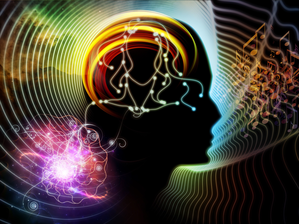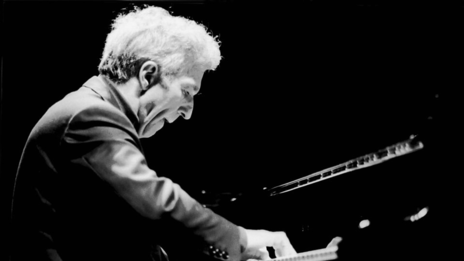“Has it ever frightened you to play, and watch your fingers moving, and not know who it is that is making them move?” Vladimir Ashkinazy
In the previous section, musical imagery has been presented as a multimodal representation of music. This section describes the processes taking place in the nervous system associated with musical performance in general, and musical imagery in particular. The fundamental idea expressed in this section is that action (motor control) and perception should be seen as integrated functions of the brain, and are tightly linked in musicians. The concepts and experimental findings presented below can be used to understand the internal processes involved in mental imagery rehearsal. Additionally, they can explain the potential value of mental imagery rehearsal strategies that has been demonstrated in experimental research, which will be summarized in the next section.
Predictive Processing
Human beings possess the capacity to move intentionally, i.e. to move in such a way that intended outcomes are achieved. For example, a person intending to pick up a pen lying in front of him, will move his body, arm and hand in a gesture that accurately and effortlessly leads to the desired result. People are sometimes aware of their intentions and capable of expressing them verbally. However, they are largely unaware of the processes taking place in their nervous systems that transform their intentions into actions. In music making, the production of intended musical outcomes is the goal of the activity. Musical intentions and corresponding auditory expectations of outcomes of musical actions are the primary agent of motor control processes. Put differently, based on anticipations of intended musical sounds, the nervous system generates patterns of movement that lead to the production of the former. Novembre and Keller explain this fundamental insight by means of the following example:
Let us take a basic example: striking a piano key with a finger. The movement (striking the key) is intended to generate a goal (a piano tone). When this is observed from the “outside” perspective of another individual, this phenomenon seems straightforward: the movement preceded its goal. However, when considering a “first person” perspective, it is the musician’s intention (i.e., producing a piano tone) that leads the generation of a movement: moving the finger toward the piano key. This distinction might seem trivial, but in fact it represents a fundamental step to understanding that movements and their ensuing effects are intrinsically coupled in the human brain and in cognition. More specifically, a representation of a perceptual effect can trigger the movement necessary to produce the effect itself (Novembre and Keller, 1).
Before initiating a goal-directed action, the individual must have a representation of the desired effect in mind and must use this representation to select a movement pattern that will successfully bring about this effect. This insight was first described by the philosopher William James and has become known as the “ideomotor principle” (James 1890).Recent neuroscientific research has suggested that the nervous system achieves this transformation of intention into accurate motor control by means of predicting the sensory consequences of one’s actions, a phenomenon known as predictive processing (Adams, Shipp and Friston 2013). Based on the intended outcome of the action, the brain continuously predicts the required movements and the sensations that will arise as a result of them. These predictions are based on previous experiences and implicit knowledge of our own body and the world around us. Implicit knowledge here refers to the individual not being aware of having learned it and not being capable of expressing it verbally, but demonstrating the knowledge indirectly via performance (Willingham, et al. 2000), otherwise known as tacit knowledge. Put simply, the brain “knows” how to affect the surroundings in order to achieve intended results, and which actions of the body are required, as a result of prior experiences. Preceding the initiation of actions and during their performance, the brain keeps readjusting its predictions, thus enabling accuracy and early processing of feedback that results from one’s actions. The feedback that results from such actions can be divided into exteroception, by which one perceives the outside world, and proprioception, which is the sense of the relative position of one's ownparts of the bodyand strength of effort being employed in movement (Anderson and Glanze 1994). Muscles, tendons and joint capsules are equipped with sensors that continuously keep the nervous system updated on muscle effort, the force exerted on tendons, joint position and speed of movement. Adams et al. have argued that the signals the brain sends down the spine in order to generate intended actions should be seen as predictions of the proprioceptive onsequenses of these actions. Classical reflex arcs at the levelof the spine, respond to these predictions by fulfilling them: they bring about changes in muscle length and joint position so that the actual proprioceptive signals match the predictions, thus producing the intended movements (Adams, Shipp and Friston 2013).
The effects of predictive processing can be seen in certain aspects of motor control in musicians. For instance, pianists have been found to perform wrong keypresses (“wrong notes”) softer than correct keypresses. In conjunction with this, differences in brain activity connected to wrong or correct keypresses are observable already 100 milliseconds before keypresses are fully executed (Maidhof, et al. 2009). In practical terms, this indicates that pianists “know” they are going to play a wrong note a split second before playing it and even (non-consciously) try to mitigate negative consequences of the wrong note by playing it softer. This phenomenon is attributed to predictive processing in the pianist’s brain, more specifically the detection of a mismatch between a predicted sensory consequence of an action and the intended action goal.
Ideomotor Learning
In order to perform intentional actions successfully, the individual needs to “know” in advance what the consequences of a particular movement will be. As a result, voluntary action requires the ability to associate movements and their perceivable consequences. When individuals perform actions, they learn what the consequences of these actions are, a process known as ideomotor learning (Melcher, et al. 2013). The capacity for linking movements and their ensuing effects is inborn and is fundamental for motor skill acquisition in all stages of life (Hommel and Elsner 2009). Ideomotor learning happens spontaneously, in the sense that it does not require effort or attention of the learner. Moreover, it takes place non-consciously, as a result of self-organizing properties of the nervous system, i.e. the intrinsic tendency of the nervous system to improve its organization without an external control agent (Haken 2008).
Ideomotor learning results in the emergence of associations between movement patterns and intended perceivable outcomes, also known as action-perception couplings. The brain can form action-perception couplings as a result of tight functional and anatomical links between brain areas involved in perception and brain areas involved in motor control. Current neuroscience suggests that action perception and action execution are intrinsically coupled in the human brain (Novembre and Keller 2014). This point of view is supported by the observation that individuals who perceive events of which they know (as a result of learning) that they may result from certain movements, sometimes start performing the movements leading to them, a phenomenon known as ideomotor response activation (Elsner, Hommel and Mentschel, et al. 2002). Put differently, movements can be evoked by using their perceivable consequences as external cues. Ideomotor response activation can even be observed when individuals do not perform any physical movements. For example, various studies have demonstrated that areas of the brain associated with motor planning and execution are co-activated when musicians listen to their instrument (Bangert, et al., 2006). Furthermore, it has been shown that the imagination of perceiving an event automatically activates motor parts of the brain involved in bringing about this same event. For example, it has been found that pianists who imagine producing certain sounds on their instruments automatically activate corresponding motor areas of their brains, even when they do not move physically (Davidson-Kelly, et al., 2011). Conversely, the performance of actions automatically triggers activation of perceptual brain areas, even in the absence of perceivable action effects. It has been demonstrated that the production of silent playing movements leads to activation of auditory areas of the brain (Bangert, et al., 2006). The action-perception couplings required for music making emerge as a result of being musically active. Accordingly, the co-activations described above are only observed in individuals who had (varying amounts of) musical training. Nonetheless, it has been found that action-perception couplings are formed remarkably quickly: non-musicians develop a certain amount of co-activation of auditory and motor brain areas within a couple of days of training a simple musical task (Lahav, Saltzman, & Schlaug, 2007).
Two Theories
Johnson (2003) distinguishes between two theories that show why mental imagery can be effective. The first is the psychoneuromuscular theory, which supposes that vividly imagined events cause an innervation in your muscles. This innervation is similar to what is produced when you physically execute the movement because the brain senses the imagined very similar to the actual movement. Another theory about the effectiveness of mental imagery is the Symbolic Learning Theory, which supposes that rehearsal of a sequence of movements involved in a task is useful because movements are symbolic components of the task (Johnson, 2003). In other words: the rehearsal forms a mental blueprint for the body and the more they are rehearsed, the more familiar they become.
Auditory Imagery
Auditory imagery has been found to involve many, but not all, of the brain areas involved in auditory perception. The brain areas that become active when hearing music are largely the same as when imagining music. The main difference in brain activation between imaging and hearing music is the role of the primary auditory cortex, which is activated by auditory perception but not activated as strongly by instructions to generate or use auditory imagery (Hubbard 2010, 321).
It has been shown that anticipatory auditory imagery benefits music performance by enabling rapid and thorough action preplanning, as demonstrated in speeded reaction time tasks (Keller and Koch 2008). The efficiency of this mechanism increased with musical experience, which may be attributed to the effects of music training on the vividness of auditory images and/or functional links between auditory and motor brain regions (Keller, Dalla Bella and Koch 2010, 508). In addition to this, anticipatory auditory imagery has been demonstrated to result in less forceful movements:
This mechanism [anticipatory auditory imagery] may assist in (1) selecting which movements should be made (e.g., which keys of a musical instrument to act upon), and (2) planning how these movements should be executed in order to produce the intended distal effects (ideal sounds) in a biomechanically economical manner. In sum, cross-modal ideomotor processes may function dually to facilitate planning efficiency and biomechanical economy in voluntary action. It may be the case that anticipatory auditory imagery, while not necessarily facilitating timing accuracy, generally enhances biomechanical economy by encouraging less forceful, smaller amplitude movements (Keller, Dalla Bella and Koch, 512).
In his review of empirical findings about auditory imagery, Hubbard concludes that auditory imagery is related to musical ability or experience, but that it is not clear whether differences in auditory imagery lead to differences in musical ability and experience or whether differences in musical ability and experience lead to differences in auditory imagery (Hubbard 2010, 323-324). Keller and Koch have suggested that individuals with more musical training possess greater vividness of auditory imagery than do individuals with little or no musical training (Keller and Koch 2008, 289) . Auditory imagery has been suggested to contribute to increased ability in sight-reading, musical performance, and musical note identification. Additionally, auditory imagery is evoked during notational audiation by trained musicians, and there are anecdotal reports that auditory imagery was used in composition by several noted composers, Beethoven being a well-known example (Hubbard 2010,324)

